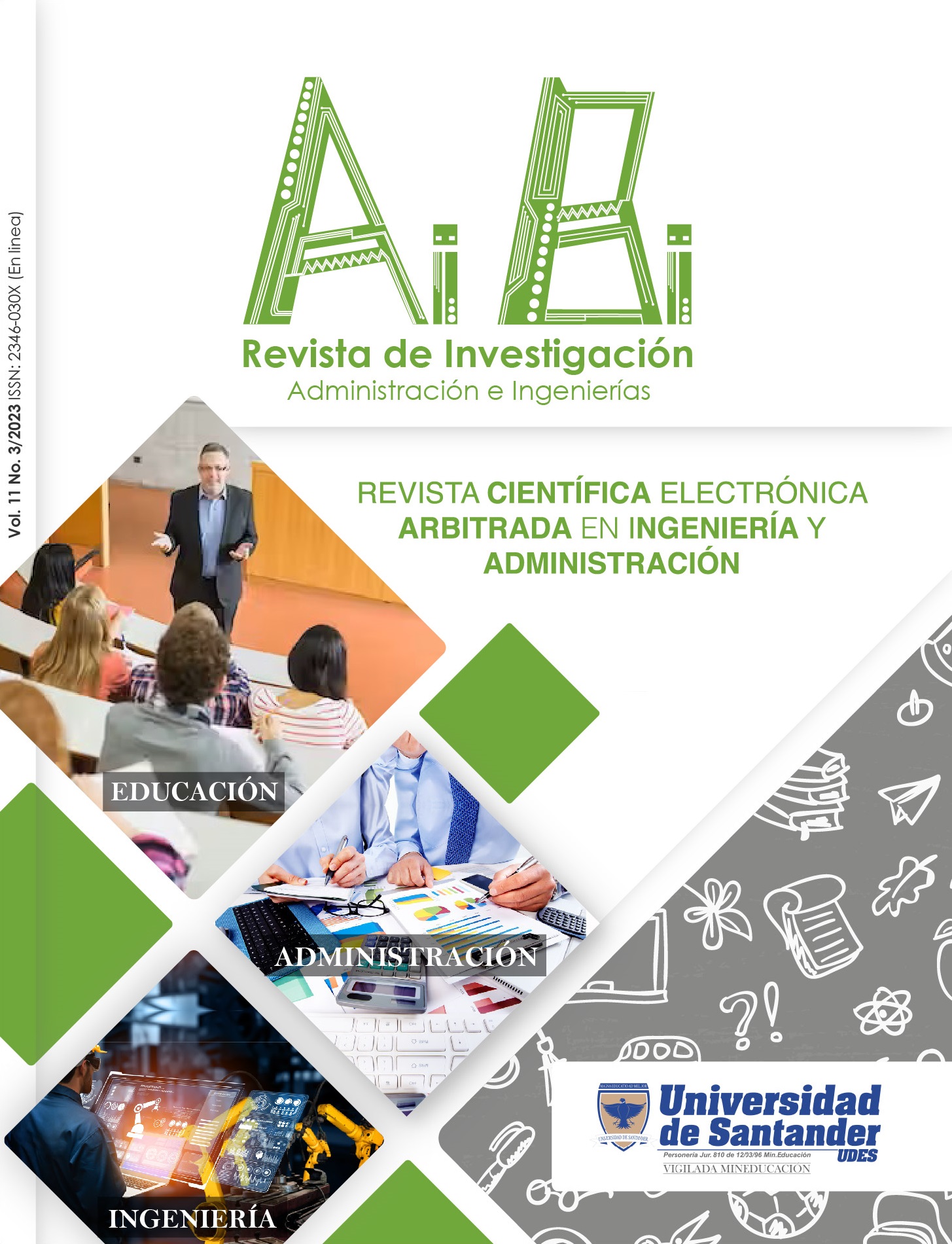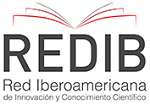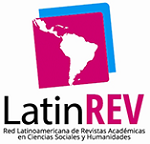Optimización de la digestión anaerobia mediante control automático con redes neuronales: un análisis bibliométrico
DOI:
https://doi.org/10.15649/2346030X.3891Palabras clave:
optimización, digestión anaerobia, ARN, bibliometría, análisis bibliométrico, índice H, scopusResumen
El presente trabajo se realizó con el objetivo de presentar la importancia actual de los trabajos relacionados con la optimización de digestores anaerobios utilizando redes neuronales artificiales. Se utilizó un enfoque metodológico cienciométrico para una revisión sistemática de las publicaciones indexadas en Scopus hasta 2023. Se utilizó el índice H para evaluar la visibilidad e impacto de las revistas, autores, países e instituciones con mayores niveles de producción y reconocimiento en el campo de estudio. Esta revisión también permitió analizar la interacción entre grupos y redes de conocimiento con los autores e instituciones identificados en la clasificación. Los resultados muestran un incremento significativo en el número de publicaciones entre los años 1973 y 2023, que nos permiten caracterizar a escala las principales dimensiones de la investigación, desarrollo e innovación relacionadas con el estudio de métodos de optimización de biodigestores anaerobios para la producción de biogás a partir de diferentes residuos como el procedente del proceso de extracción del aceite de palma. Los resultados muestran un aumento significativo en el número de publicaciones entre 2016 y 2023, se han encontrado un total de 2847 documentos, donde el 95,64% están en inglés. El país que más publicaciones presenta sobre el tema es China con una contribución del 19,28%, seguido de Estados Unidos con un 9,8%, India con un 7,2% y España con un 6,2% entre otros.
Referencias
P. Duarah , D. Haldar , AK Patel, C. Di Dong, RR Singhania, and MK Purkait , “A review on global perspectives of sustainable development in bioenergy generation,” Bioresour Technol , vol. 348, p. 126791, Mar. 2022, doi: 10.1016/J.BIORTECH.2022.126791.
R. Sequeda Barros, M. Durán Contreras, F. Romani Morris, M. Vanegas Chamorro, and A. Albis Arrieta, “Evaluation of the methanogenic potential of anaerobic digestion of agro-industrial wastes,” Heliyon, vol. 9, no. 3, p. e14317, Mar. 2023, doi: 10.1016/J.HELIYON.2023.E 14317.
BX Lee et al. , “Transforming Our World: Implementing the 2030 Agenda Through Sustainable Development Goal Indicators,” J Public Health Policy , vol. 37, no. 1, p. 13–31, 2016, doi: 10.1057/s41271-016-0002-7.
LC Ampese , WG Sganzerla , H. Di Domenico Ziero , A. Mudhoo , G. Martins, and T. Forster-Carneiro, “Research progress, trends, and updates on anaerobic digestion technology: A bibliometric analysis,” J Clean Prod , vol. 331, p. 130004, Jan. 2022, doi: 10.1016/J.JCLEPRO.2021.130004.
T. Hák , S. Janoušková , and B. Moldan , “Sustainable Development Goals: A need for relevant indicators,” Ecol Indic , vol. 60, p. 565–573, Jan. 2016, doi: 10.1016/J.ECOLIND.2015.08.003.
S. Jacob and R. Banerjee, “Modeling and optimization of anaerobic codigestion of potato waste and aquatic weed by response surface methodology and artificial neural network coupled genetic algorithm,” Bioresour Technol, vol. 214, p. 386–395, Aug. 2016, doi: 10.1016/J.BIORTECH.2016.04.068.
T. Beltramo , C. Ranzan , J. Hinrichs, and B. Hitzmann, “Artificial neural network prediction of the biogas flow rate optimized with an ant colony algorithm,” Biosyst Eng , vol. 143, p. 68–78, Mar. 2016, doi: 10.1016/J.BIOSYSTEMSENG.2016.01.006.
F. Codignole Luz, S. Cordiner , A. Manni, V. Mulone , and V. Rocco, “Biochar characteristics and early applications in anaerobic digestion-a review,” J Environ Chem Eng , vol. 6, no. 2, p. 2892–2909, Apr. 2018, doi: 10.1016/J.JECE.2018.04.015.
SK Nuhu, JA Gyang, and JJ Kwarbak, “Production and optimization of biomethane from chicken, food, and sewage wastes: The domestic pilot biodigester performance,” Clean Eng Technol, vol. 5 p. 100298, Dec. 2021, doi: 10.1016/J.CLET.2021.100298.
SK Pramanik, “Anaerobic co-digestion of municipal organic solid waste: Achievements and perspective,” Bioresour Technol Rep, vol. 20, p. 101284, Dec. 2022, doi: 10.1016/J.BITEB.2022.101284.
L. Lin, R. Yan, Y. Liu, and W. Jiang, “In-depth investigation of enzymatic hydrolysis of biomass wastes based on three major components: Cellulose, hemicellulose and lignin,” Bioresour Technol, vol . 101, no. 21, p. 8217–8223, Nov. 2010, doi: 10.1016/J.BIORTECH.2010.05.084.
P. Weiland, “Biogas production: current state and perspectives,” Appl Microbiol Biotechnol , vol. 85, no. 4, p. 849–860, 2010, doi: 10.1007/s00253-009-2246-7.
CL Hansen and DY Cheong, “Agricultural Waste Management in Food Processing,” Handbook of Farm, Dairy and Food Machinery Engineering , pp. 673–716, Jan. 2019, doi: 10.1016/B978-0-12-814803-7.00026-9.
JG Ferry, “The chemical biology of methanogenesis,” Planet Space Sci , vol. 58, no. 14–15, p. 1775–1783, Dec. 2010, doi: 10.1016/J.PSS.2010.08.014.
S. O'Connor, E. Ehimen , SC Pillai, A. Black, D. Tormey , and J. Bartlett, “Biogas production from small-scale anaerobic digestion plants on European farms,” Renewable and Sustainable Energy Reviews , vol. 139, p. 110580, Apr. 2021, doi: 10.1016/J.RSER.2020.110580.
BK Zaied et al. , “Prediction and optimization of biogas production from POME co-digestion in solar bioreactor using artificial neural network coupled with particle swarm optimization (ANN-PSO),” Biomass Convers Biorefin , vol. 13, no. 1, p. 73–88, 2023, doi: 10.1007/s13399-020-01057-6.
E. Sahinkaya , “Biotreatment of zinc-containing wastewater in a sulfidogenic CSTR: Performance and artificial neural network (ANN) modeling studies,” J Hazard Mater , vol. 164, no. 1, p. 105–113, May 2009, doi: 10.1016/J.JHAZMAT.2008.07.130.
MM Lamoh , EJ Joy, M. Rashid, S. Islam, and S. Hashmi, “Biogas production optimization from palm oil mill effluent: Experiments with anaerobic reactor,” International Journal of Integrated Engineering , vol. 12, no. 3, p. 261–270, 2020, doi: 10.30880/ijie.2020.12.03.030.
R. Nkuna , A. Roopnarain , and R. Adeleke, “Effects of organic loading rates on microbial communities and biogas production from water hyacinth: a case of mono- and co-digestion,” Journal of Chemical Technology and Biotechnology , vol. 94, no. 4, p. 1294–1304, Apr. 2019, doi: 10.1002/jctb.5886.
K. Kundu, S. Sharma, and TR Sreekrishnan , “Influence of Process Parameters on Anaerobic Digestion Microbiome in Bioenergy Production: Towards an Improved Understanding,” Bioenergy Research , vol. 10, no. 1. Springer New York LLC, p. 288–303, Mar. 01, 2017. doi: 10.1007/s12155-016-9789-0.
N. Donthu , S. Kumar, D. Mukherjee, N. Pandey, and WM Lim, “How to conduct a bibliometric analysis: An overview and guidelines,” J Bus Res , vol. 133, p. 285–296, Sep. 2021, doi: 10.1016/J.JBUSRES.2021.04.070.
S. Kumar, R. Sureka , WM Lim, S. Kumar Mangla , and N. Goyal, “What do we know about business strategy and environmental research? Insights from Business Strategy and the Environment,” Bus Strategy Environment, vol. 30, no. 8, p. 3454–3469, 2021, doi: 10.1002/bse.2813.
E. Garfield, “The History and Meaning of the Journal Impact Factor,” JAMA, vol. 295, no. 1, p. 90–93, Jan. 2006, doi: 10.1001/jama.295.1.90.
G. Mao, X. Liu, H. Du, J. Zuo , and L. Wang, “Way forward for alternative energy research: A bibliometric analysis during 1994–2013,” Renewable and Sustainable Energy Reviews , vol. 48, p. 276–286, Aug. 2015, doi: 10.1016/J.RSER.2015.03.094.
T. Braun, W. Glänzel, and A. Schubert, “A Hirsch-type index for journals,” Scientometrics, vol. 69, no. 1, p. 169–173, 2006, doi: 10.1007/s11192-006-0147-4.
JE Hirsch, “An index to quantify an individual's scientific research output,” Proceedings of the National Academy of Sciences , vol. 102, no. 46, p. 16569–16572, Nov. 2005, doi: 10.1073/pnas.0507655102.
Q. Hou, G. Mao, L. Zhao, H. Du, and J. Zuo , “Mapping the scientific research on life cycle assessment: a bibliometric analysis,” International Journal of Life Cycle Assessment , vol. 20, no. 4, p. 541–555, 2015, doi: 10.1007/s11367-015-0846-2.
D. Pérez García, F. García Reina, y D., Hernández Eduardo, « Decrease the losses ofelectric energy for distribution using an innovative measurements and control technology for the decision makings »., Colombian Journal of Advanced Technologies RCTA, vol. 2, n.º 34, pp. 144–150, ago. 2019. https://doi.org/10.24054/rcta.v2i34.75.
Q. Ye, H. Song, and T. Li, “Cross-institutional collaboration networks in tourism and hospitality research,” Tour Manag Perspect , vol. 2–3, p. 55–64, 2012, doi: 10.1016/j.tmp.2012.03.002.
A. Aghaei Chadegani et al. , “A comparison between two main academic literature collections: Web of science and scopus databases,” Asian Soc Sci , vol. 9, no. 5, p. 18–26, 2013, doi: 10.5539/ ass.v 9n5p18.
H. Chen, Y. Yang, Y. Yang, and W. Jiang, “A bibliometric investigation of life cycle assessment research in the web of science databases,” pp. 1674–1685, 2014, doi: 10.1007/s11367-014-0777-3.
LMA Bettencourt and J. Kaur, “Evolution and structure of sustainability science,” vol. 108, no. 49, 2011, doi: 10.1073/pnas.1102712108.
J. E. Meneses Flórez y D. P. Meneses Salazar, «Hardware / software architecture for an intelligent well prototype based on mechanical pumping », Colombian Journal of Advanced Technologies, RCTA, vol. 2, n.º 36, pp. 109–121, ago. 2020.
MA Khan, D. Pattnaik , R. Ashraf, I. Ali, S. Kumar, and N. Donthu , “Value of special issues in the journal of business research: A bibliometric analysis,” J Bus Res , vol. 125, p. 295–313, Mar. 2021, doi: 10.1016/J.JBUSRES.2020.12.015.
L. Sillero , WG Sganzerla , T. Forster-Carneiro, R. Solera, and M. Perez, “A bibliometric analysis of the hydrogen production from dark fermentation,” Int J Hydrogen Energy , vol. 47, no. 64, p. 27397–27420, Jul. 2022, doi: 10.1016/J.IJHYDENE.2022.06.083.
TI Assis and RF Gonçalves, “Valorization of food waste by anaerobic digestion: A bibliometric and systematic review focusing on optimization,” J Environ Manage , vol. 320, 2022, doi: 10.1016/j.jenvman.2022.115763.
A. Serrano, C. Engineering, and S. Lucia, “alternative to the combustion of olive mill solid waste in terms of energy,” pp. 1–13, 2020, doi: 10.1002/bbb.2159.
MR Atelge et al. , “A critical review of pretreatment technologies to enhance anaerobic digestion and energy recovery,” Fuel , vol. 270, p. 117494, Jun. 2020, doi: 10.1016/J.FUEL.2020.117494.
L. A. Lasso Cardona, E. Rincón Reyes, y G. D. Estrada Holguín, « Introduction to capacity evaluation: a theoretical review », Colombian Journal of Advanced Technologies RCTA, vol. 2, n.º 36, pp. 34–10, ago. 2020.
I. Rocamora , ST Wagland , R. Villa, EW Simpson, O. Fernández, and Y. Bajón -Fernández, “Dry anaerobic digestion of organic waste: A review of operational parameters and their impact on process performance,” Bioresour Technol , vol. 299, p. 122681, Mar. 2020, doi: 10.1016/J.BIORTECH.2019.122681.
Y. He, S. Guo, P. Dong, Y. Zhang, J. Huang, and J. Zhou, “A state-of-the-art review and bibliometric analysis on the sizing optimization of off-grid hybrid renewable energy systems,” Renewable and Sustainable Energy Reviews , vol. 183, p. 113476, Sep. 2023, doi: 10.1016/J.RSER.2023.113476.
MU Bin Khawer et al. , “Anaerobic digestion of sewage sludge for biogas & biohydrogen production: State-of-the-art trends and prospects,” Fuel , vol. 329, p. 125416, Dec. 2022, doi: 10.1016/J.FUEL.2022.125416.
M. Akin et al. , “Conversion of organic wastes into biofuel by microorganisms: A bibliometric review,” Cleaner and Circular Bioeconomy, vol. 6, p. 100053, Dec. 2023, doi: 10.1016/J.CLCB.2023.100053.
W.Nabgan et al. , “Catalytic biohydrogen production from organic waste materials: A literature review and bibliometric analysis,” Int J Hydrogen Energy , vol. 46, no. 60, p. 30903–30925, Sep. 2021, doi: 10.1016/J.IJHYDENE.2021.04.100.
M. Durán Chinchilla y A. A. Rosado Gómez, « Active learning and innovation in engineering students », Colombian Journal of Advanced Technologies RCTA, vol. 1, n.º 35, pp. 127–135, feb. 2020. doi.org/10.24054/16927257.v35.n35.2020.3927
G. Mao, H. Hu, X. Liu, J. Crittenden, and N. Huang, “A bibliometric analysis of industrial wastewater treatments from 1998 to 2019,” Environmental Pollution, vol. 275, p. 115785, Apr. 2021, doi: 10.1016/J.ENVPOL.2020.115785.
H.Tan et al., “Global evolution of research on green energy and environmental technologies: A bibliometric study,” J Environ Manage , vol. 297, p. 113382, Nov. 2021, doi: 10.1016/J.JENVMAN.2021.113382.
S. Zhang, Y. Jin , W. Chen, J. Wang, Y. Wang, and H. Ren, “Artificial intelligence in wastewater treatment: A data-driven analysis of status and trends,” Chemosphere , vol. 336, p. 139163, Sep. 2023, doi: 10.1016/J.CHEMOSPHERE.2023.139163.
JCBF Bijos , VM Zanta , J. Morató , LM Queiroz, and KPSR Oliveira- Esquerre , “Improving circularity in municipal solid waste management through machine learning in Latin America and the Caribbean,” Sustain Chem Pharm , vol. 28, p. 100740, Sep. 2022, doi: 10.1016/J.SCP.2022.100740.
E. Barrientos Avendaño, M. A. Rincon, y F. R. Cuesta Quintero, «aplicación web para la administración de publicidad utilizando el algoritmo de inteligencia artificial k-means, como apoyo a la implementación de una caneca de reciclaje inteligente», Colombian Journal of Advanced Technologies RCTA, vol. 1, n.º 39, pp. 1–8, feb. 2022. doi.org/10.24054/rcta.v1i39.1367
L. Zhao, T. Dai, Z. Qiao , P. Sun, J. Hao, and Y. Yang, “Application of artificial intelligence to wastewater treatment: A bibliometric analysis and systematic review of technology, economy, management, and wastewater reuse,” Process Safety and Environmental Protection , vol. 133, p. 169–182, Jan. 2020, doi: 10.1016/J.PSEP.2019.11.014.
H. Tian, M. Yan, L. Treu, I. Angelidaki, and IA Fotidis, “Hydrogenotrophic methanogens are the key for a successful bioaugmentation to alleviate ammonia inhibition in thermophilic anaerobic digesters,” Bioresour Technol, vol. 293, p. 122070, Dec. 2019, doi: 10.1016/J.BIORTECH.2019.122070.
S. Cárdenas-Rodríguez, C. A. Vides-Herrera, y A. Pardo-García, «Sistema de alerta temprana de inundaciones para el río Arauca basado en técnicas de inteligencia artificial», rev. investig. desarro. innov, vol. 12, n.º 2, pp. 315–326, ago. 2022. https://doi.org/10.19053/20278306.v12.n2.2022.15274.
F. Arenas A. and H. Vivas, “An Interactive Software for Training Multilayer Neural Networks Using the Structured Secant Method,” Colombian Journal of Advanced Technologies (Rcta), vol. 2, no. 34, p. 85–90, 2020, doi.org/10.24054/rcta.v1i39.1367.
Descargas
Publicado
Cómo citar
Descargas
Número
Sección
Licencia
Derechos de autor 2023 AiBi Revista de Investigación, Administración e Ingeniería

Esta obra está bajo una licencia internacional Creative Commons Atribución 4.0.
La revista ofrece acceso abierto bajo una Licencia Creative Commons Attibution License

Esta obra está bajo una licencia Creative Commons Attribution (CC BY 4.0).










